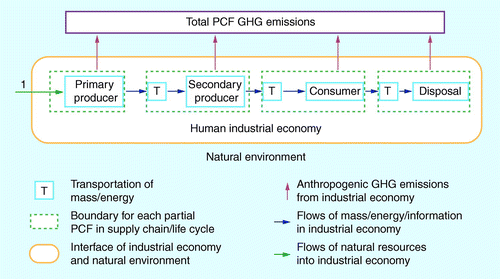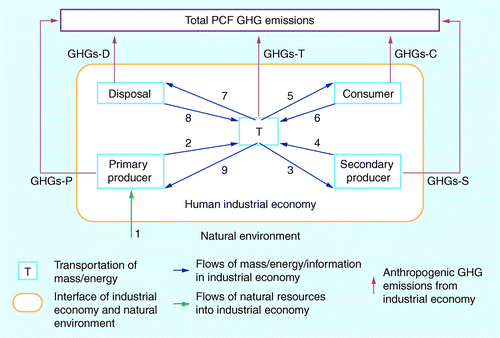Figures & data
Targeted data collection for a full life cycle PCF begins in a cradle-to-gate manner, generating a partial PCF, starting with natural resource extraction (flow 1) by primary producers, who operate at the interface of the natural environment and the industrial supply chain. All GHG emissions produced by processes under the control of each producer in the supply chain (primary producers and secondary producers) are quantified by that producer (gate-to-gate accounting). As products are transported between actors in the life cycle of the product (producers, consumers and disposal facilities), emissions of GHGs generated by transportation are applied to the partial PCF of the receiving organization, illustrated by the dashed boundaries.
PCF: Product carbon footprint.

Targeted data collection begins in a cradle-to-gate manner starting with natural resource extraction (flow 1) by primary producers. Transportation emissions (GHGs-T) from one producer to the next are applied to the partial PCF of the downstream producer. Movement of materials, intermediate and finished products, and energy between any actors in the life cycle can be sequentially described using circuits of the numbered flows. The total life cycle PCF is the aggregate of the partial PCFs of all actors in the life cycle.
GHGs-C: GHG emissions resulting from all unit processes controlled by the consumer; GHGs-D: GHG emissions resulting from all unit processes controlled by the disposal facility; GHGs-P: GHG emissions resulting from all unit processes controlled by the primary producer; GHGs-S: GHG emissions resulting from all unit processes controlled by the secondary producer; PCF: Product cabon footprint.
